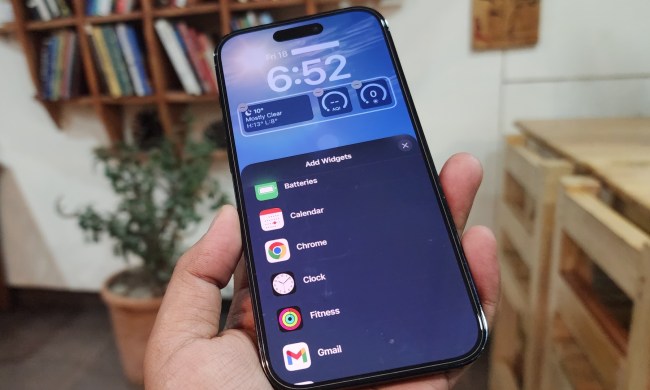A Chinese company claims to have produced the world’s first smartphone with a holographic interface. It’s called the Estar Takee 1, and no, we’d never heard of the company before, either. To generate a holographic image, the Takee phone has four front-facing cameras, which track the user’s eyes to create a three-dimensional image. If that sounds familiar, it’s the same approach taken by Amazon with its Fire Phone.
Does that make the world’s first claim redundant? Maybe not. A promo video, along with the official page advertising the device, all make it seem like the Takee takes its holographic effect and moves it beyond just the interface, and apply it to games, movies, video calls, and a variety of other interesting features. However, without seeing the device in action, it’s difficult to know exactly how true all this is.
For example, the video shows the phone “projecting” a 3D image off the screen, whether it’s from an app or an incoming video call, which is really exciting. If it can really do it. The footage gives the impression everyone can see the holographic boy on the screen, but if the cameras are only tracking the user’s eyes, that probably won’t be the case. The same can be said for the explosions, racing cars, and 3D galaxies.
The website, according to translations, talks about several features built into the operating system which makes use of the 3D tech. The cameras can recognize gestures such as those for unlocking the phone or operating the touchscreen, so swipes in the air could be used to navigate through home screens. We’ve seen something like this on the Galaxy Note 3, and also heard about a similar feature on a future Nokia Windows Phone device.
Takee’s phone is otherwise relatively unremarkable. It has a 5.5-inch 1080p screen, a 13-megapixel camera, a 2,500mAh battery, 32GB of memory, and a 2GHz octa-core MediaTek processor with 2GB of RAM. A white and a black version will be joined by one wrapped in 18k gold. An unusual stand for the device can be seen in some pictures, which appears to include a set of speakers. If the splash page on Takee’s site is correct, the phone will go on sale later today, but only in China.
We’d be surprised if the phone made it to the U.S., but are intrigued enough to see the holographic display in action, if only to discover whether it can live up to the hype.



